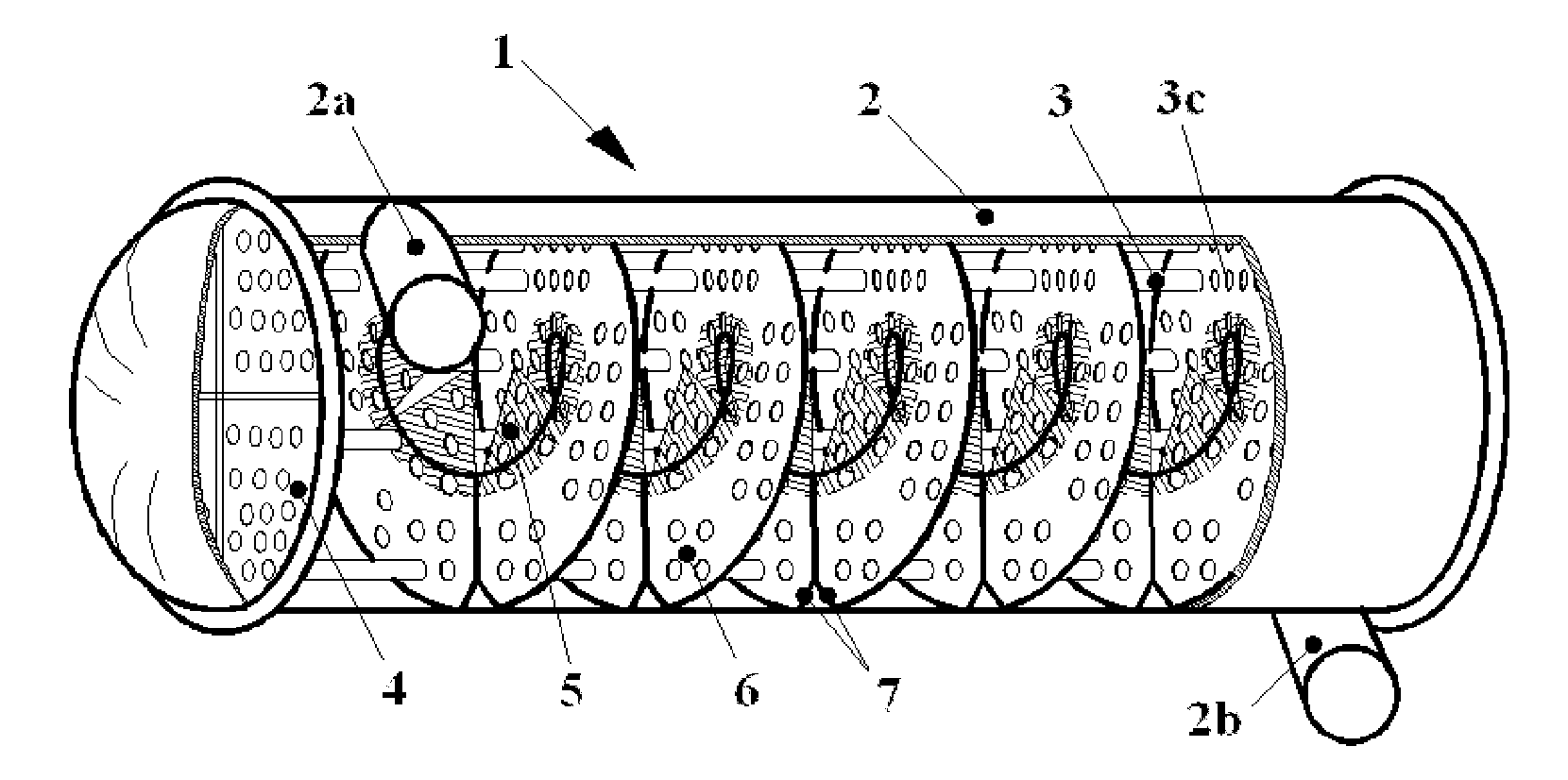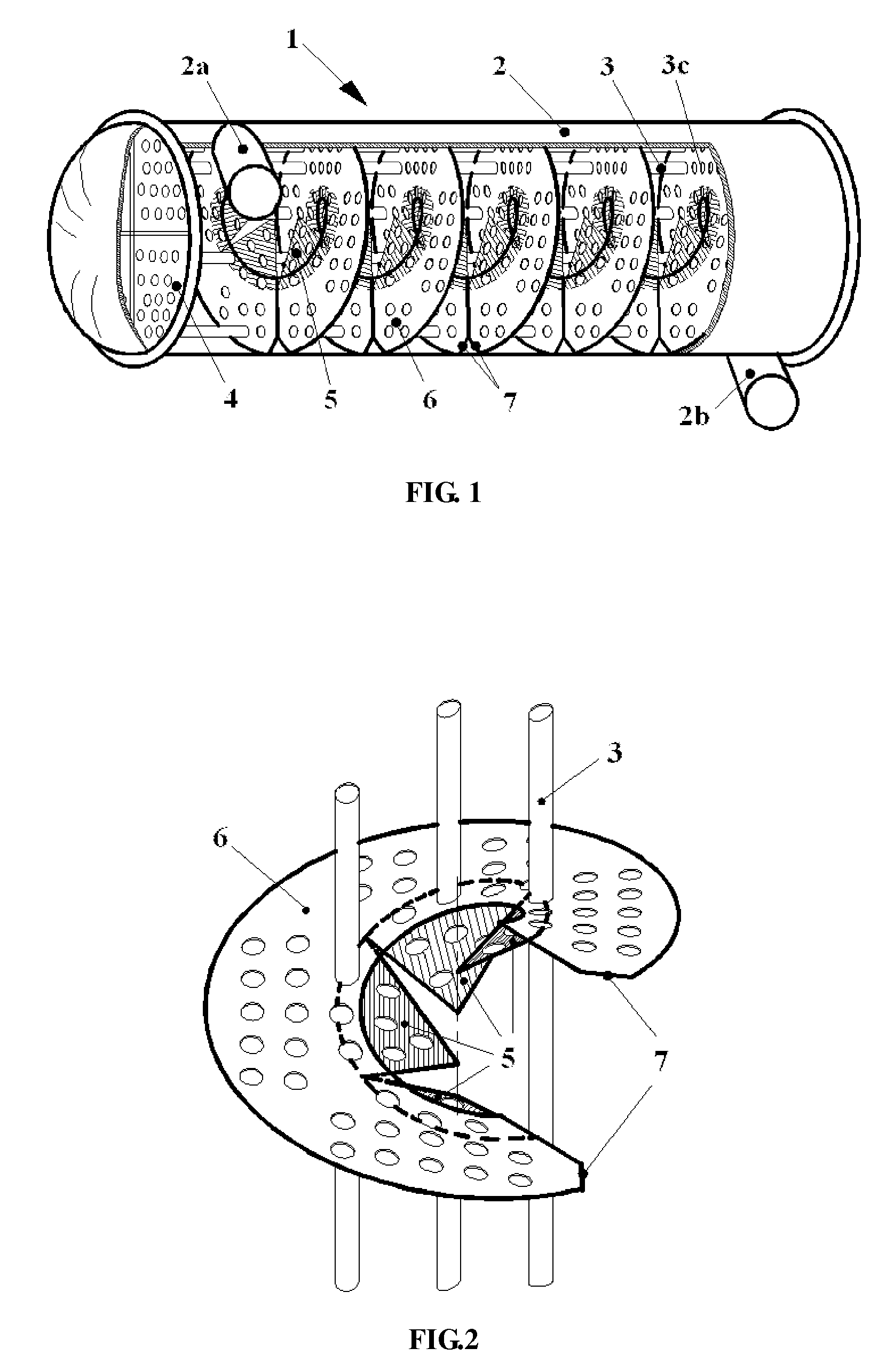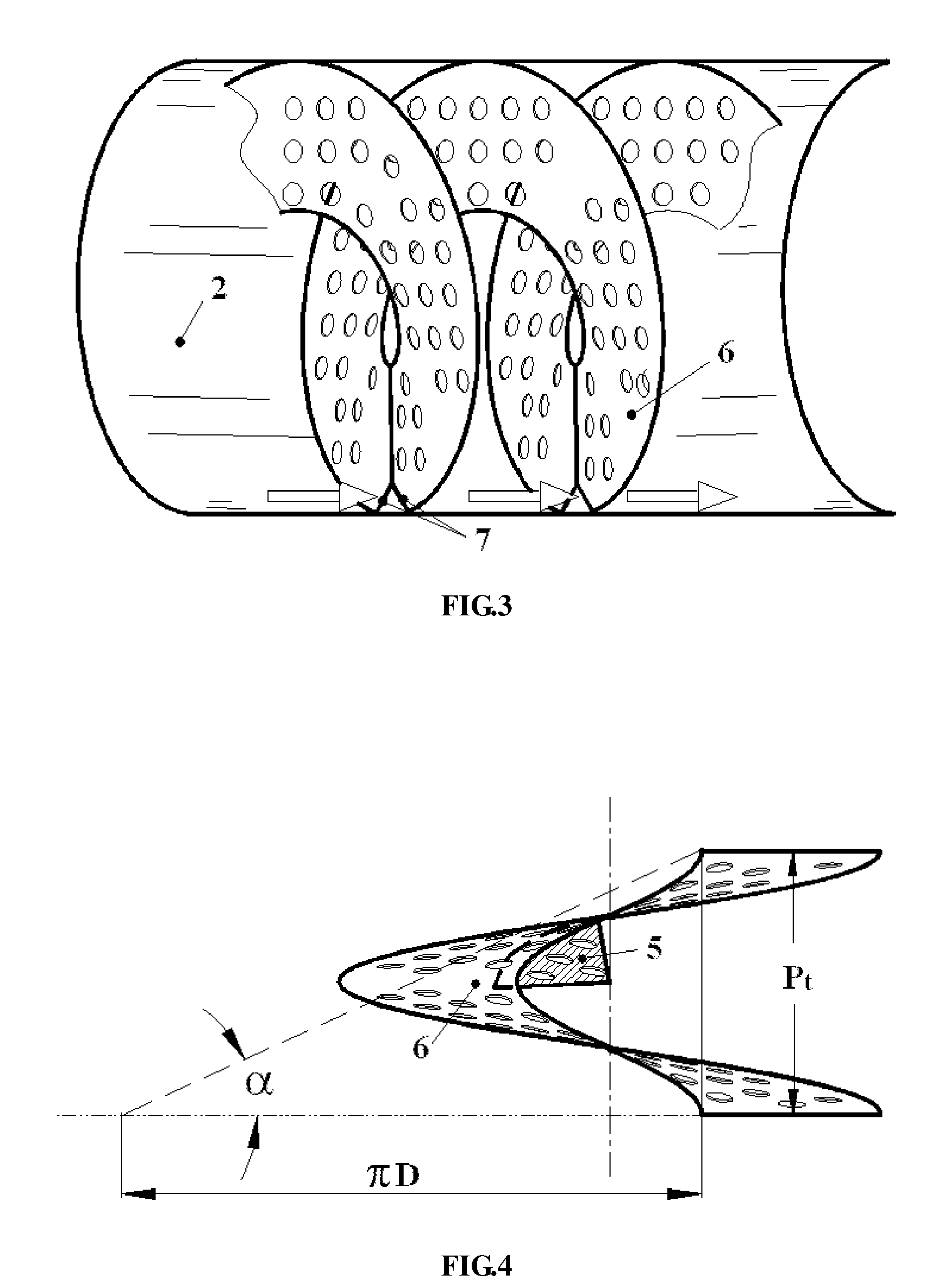Single shell-pass or multiple shell-pass shell-and-tube heat exchanger with helical baffles
- Summary
- Abstract
- Description
- Claims
- Application Information
AI Technical Summary
Benefits of technology
Problems solved by technology
Method used
Image
Examples
Embodiment Construction
[0061]Hereinafter, detailed explanations will be given to the present invention with references to the drawings.
[0062]As shown in FIG. 1, the shell-and-tube heat exchanger with combined helical baffles according to present invention comprises a shell body 2, a shell side inlet tube 2a, a shell side outlet tube 2b, a heat exchange tube bundle 3, tube plates 4, inner helical baffles 5, and outer helical baffles 6. The inlet tube on the shell side 2a and the outlet tube on the shell side 2b of the shell body 2 take the form that fluids are introduced into and discharged out laterally. They are mounted to the shell body 2, in close proximity to its outer periphery. Fluid is introduced into and discharged out along the directions tangent to the shell body, such that the behavior of the fluid on the shell side becomes more similar to helical flows and the local pressure drop at the inlet and the outlet are reduced. The heat exchange tube bundle 3 penetrates through the inner and out helic...
PUM
| Property | Measurement | Unit |
|---|---|---|
| Flow rate | aaaaa | aaaaa |
| Diameter | aaaaa | aaaaa |
| Pressure drop | aaaaa | aaaaa |
Abstract
Description
Claims
Application Information
 Login to View More
Login to View More - R&D
- Intellectual Property
- Life Sciences
- Materials
- Tech Scout
- Unparalleled Data Quality
- Higher Quality Content
- 60% Fewer Hallucinations
Browse by: Latest US Patents, China's latest patents, Technical Efficacy Thesaurus, Application Domain, Technology Topic, Popular Technical Reports.
© 2025 PatSnap. All rights reserved.Legal|Privacy policy|Modern Slavery Act Transparency Statement|Sitemap|About US| Contact US: help@patsnap.com



